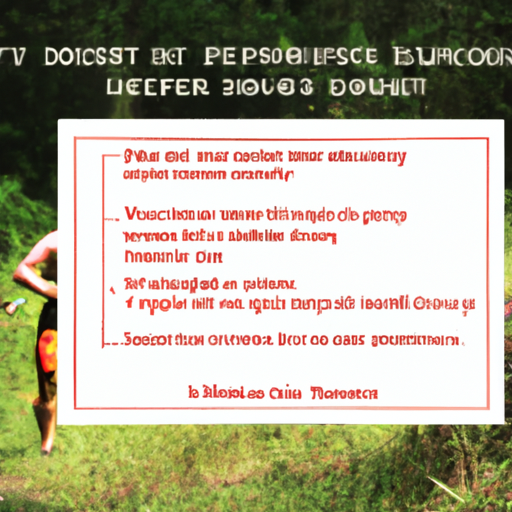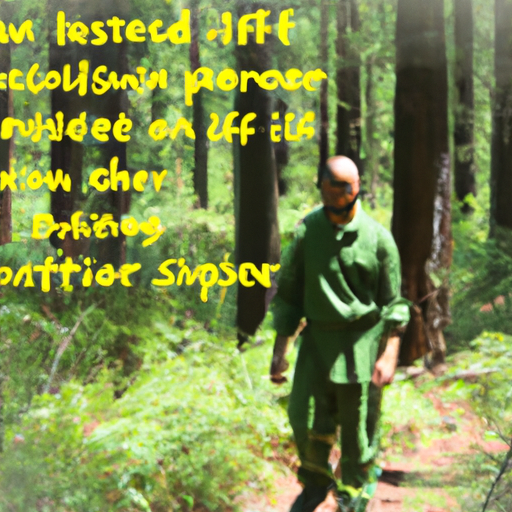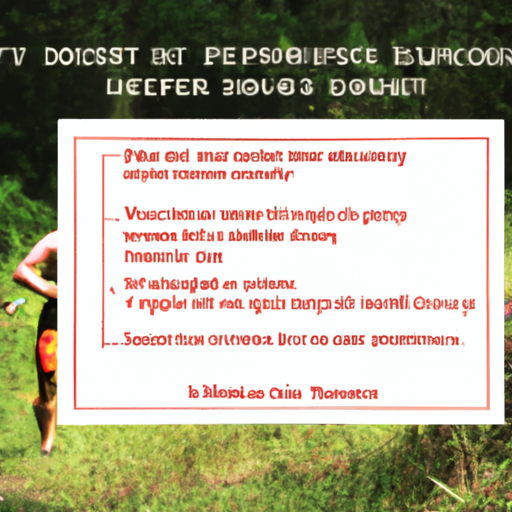As an Amazon Associate I earn from qualifying purchases.
So, you find yourself in the bush, huh? Well, don’t worry, I’ve got some self-defence techniques that will help you survive out there. Whether you’re hiking, camping, or just enjoy exploring nature, it’s always good to be prepared for any situation. With these techniques, you’ll feel more confident and secure during your bush adventures.
In this article, we’ll go over some essential self-defence techniques that are specifically tailored for bush survival. We’ll cover basic moves like punches and kicks, as well as more advanced techniques such as escape tactics and using your surroundings to your advantage. By the end, you’ll have a better understanding of how to protect yourself in the wild and be better equipped to handle any potential threats. So, let’s dive in and get you ready for your next bush adventure!
Introduction
When venturing into the bush, it’s crucial to be prepared for potential dangers and the need for self-defense. Understanding self-defense in the bush is essential for your safety and survival. This article will guide you in choosing the right techniques, such as kickboxing and Krav Maga, utilizing improvised weapons, developing escape and evasion strategies, adopting a self-defense mindset, and maintaining physical fitness for bush survival.
Understanding Bush Survival
Importance of self-defense in bush survival
When exploring the bush, self-defense skills are invaluable. Being able to protect yourself against potential threats, whether from wild animals or hostile individuals, can be the difference between life and death. With the right self-defense techniques, you can increase your chances of survival and successfully navigate through dangerous situations.
Common dangers in the bush
The bush presents various inherent dangers that require self-defense preparedness. These may include encounters with predatory animals, territorial wildlife, and the possibility of encountering hostile human beings. Understanding these dangers and being ready to defend yourself is essential for staying safe.
Key principles of bush survival
To effectively survive in the bush, there are several key principles to keep in mind. These principles include maintaining situational awareness, being prepared for potential dangers, having a proactive mindset, and equipping yourself with the necessary skills and techniques for self-defense. By adhering to these principles, you can greatly increase your chances of survival in the bush.

Choosing the Right Self-Defense Techniques
Assessing personal abilities and limitations
Before choosing specific self-defense techniques, it’s crucial to assess your own physical abilities and limitations. Everyone has unique strengths and weaknesses, and understanding these will help you choose the techniques that are most suitable for you. Consider factors such as your fitness level, body type, and any existing injuries or limitations.
Considerations for bush-specific situations
Self-defense techniques in the bush may differ from typical urban scenarios due to the different environment and potential attackers. Considerations such as limited space, navigating rugged terrain, and potential encounters with wildlife should be taken into account when choosing self-defense techniques that are best suited for bush survival.
Adapting techniques to the bush environment
When practicing self-defense techniques in the bush, it’s important to adapt them to the specific environment. Techniques that rely on urban infrastructure or equipment may not be practical or accessible in the bush. Focus on techniques that utilize natural resources and the surrounding environment to maximize your effectiveness in self-defense.
Kickboxing for Bush Self-Defense
Benefits of kickboxing in bush survival
Kickboxing is a highly effective self-defense technique that can be adapted for bush survival. The benefits of kickboxing include developing strength, speed, and agility, which are essential for defending yourself in the bush. Kickboxing also trains you to deliver powerful strikes and kicks, making it a valuable skill when encountering threats.
Basic kickboxing strikes and kicks
In kickboxing, there are several fundamental strikes and kicks that form the foundation of the technique. These include punches, such as jabs and hooks, as well as kicks, including front kicks and roundhouse kicks. Mastering these basic techniques will provide you with a versatile set of skills to defend yourself in the bush.
Developing power and speed
Power and speed are crucial in self-defense situations. To enhance your power, focus on building strength in your punches and kicks through conditioning exercises. Additionally, incorporating speed drills into your training routine will improve your reaction time and ability to strike quickly, giving you an advantage in a dangerous encounter.
Defensive tactics in kickboxing
Kickboxing not only teaches you offensive techniques but also defensive tactics for self-preservation. Techniques such as blocking, dodging, and evading can help you avoid incoming attacks while creating opportunities for counterattacks. By mastering these defensive tactics, you can effectively defend yourself in the bush.

Krav Maga Techniques for Bush Survival
Overview of Krav Maga as a self-defense system
Krav Maga is a self-defense system originally developed for the Israeli military and is highly effective in real-world situations. It focuses on practical techniques that can be quickly learned and used to defend against various types of threats. Its adaptability makes it a suitable choice for bush survival.
Krav Maga strikes and counterattacks
Krav Maga emphasizes strikes that target vulnerable areas of an attacker’s body, such as the eyes, throat, and groin. These strikes are designed to disable the aggressor quickly and allow you to escape the situation. Additionally, Krav Maga incorporates counterattacks to neutralize threats when under attack.
Defending against multiple assailants
In bush survival scenarios, it’s not uncommon to encounter multiple assailants. Krav Maga trains you to handle these situations effectively by teaching techniques that neutralize one attacker while keeping the others at bay. Utilizing awareness, movement, and strategic strikes, you can defend yourself against multiple assailants in the bush.
Adapting Krav Maga to bush scenarios
Part of mastering self-defense in the bush involves adapting techniques to suit specific scenarios. By combining Krav Maga principles with an understanding of bush-specific risks and challenges, you can modify and apply Krav Maga techniques to effectively defend yourself in bush survival situations.
Effective Use of Improvised Weapons
Identifying potential improvised weapons
In the bush, resources can be scarce and the need for self-defense may arise unexpectedly. Identifying potential improvised weapons is essential for maximizing your chances of survival. Look for objects such as branches, rocks, or even items from nature that can be used as tools for defense.
Techniques for using branches and rocks
Branches and rocks are readily available in the bush and can be used as effective weapons when properly utilized. Techniques such as swinging branches, thrusting rocks, and creating makeshift spears can provide you with a means of defense when faced with danger.
Utilizing items from nature as tools for defense
Nature offers a vast array of resources that can be used as tools for defense in the bush. By utilizing items such as tree branches, thorns, or even animal remains, you can create effective weapons or barriers that can protect you from threats. Familiarize yourself with the environment and explore the possibilities of using natural elements for self-defense.
Escape and Evasion Strategies
Developing situational awareness
One of the key strategies for self-defense in the bush is developing situational awareness. This involves being alert to your surroundings, identifying potential threats, and assessing the safest routes for escape. By being aware of your environment, you can proactively avoid dangerous situations and increase your chances of evading potential threats.
Creating distractions for escape
Creating distractions can provide you with a window of opportunity to escape. Techniques such as throwing objects, making loud noises, or using natural elements to create diversions can temporarily disorient potential attackers and allow you to quickly make your way to safety.
Navigating through dense bush
When trying to escape dangerous situations in the bush, dense vegetation can pose a challenge. It’s important to learn techniques for navigating through thick foliage, such as moving quietly, avoiding entanglements, and choosing the path of least resistance. These skills will enable you to move swiftly and silently when fleeing from potential threats.
Utilizing camouflage and concealment techniques
Camouflage and concealment techniques are invaluable when trying to evade detection in the bush. Learning how to blend in with your surroundings, create effective hiding spots, and minimize your presence can greatly increase your chances of escaping and avoiding confrontation.
Self-Defense Mindset and Psychological Strategies
Developing a proactive mindset
A proactive mindset is essential for effective self-defense. It involves being mentally prepared, proactive in assessing potential risks, and taking decisive action to protect yourself. By cultivating this mindset, you can anticipate and respond to threats more effectively in the bush.
Recognizing and managing fear
Fear is a natural response in potentially dangerous situations. However, allowing fear to paralyze you can hinder your ability to defend yourself. It’s crucial to recognize and manage fear, channeling it into focused action and decision-making. Training techniques such as breathing exercises, visualization, and positive self-talk can help manage fear and maintain a clear mindset.
Using verbal deescalation techniques
Verbal deescalation techniques can be instrumental in diffusing potentially violent situations. In the bush, encounters with aggressive humans may occur, and being able to effectively communicate and deescalate confrontations can save lives. Employ techniques such as active listening, empathy, and maintaining a calm and confident demeanor to defuse tense situations.
Fitness and Conditioning for Bush Self-Defense
Importance of physical fitness in bush survival
Physical fitness is a critical component of bush survival and self-defense. Having a good level of strength, endurance, and flexibility will enable you to navigate challenging terrain, fend off attackers, and endure the physical demands of survival situations. It’s essential to maintain a regular fitness routine that includes both cardiovascular and strength training exercises.
Specific exercises to improve strength and endurance
To improve strength and endurance for bush self-defense, incorporate exercises such as bodyweight exercises, weightlifting, running, and hiking. These activities will enhance your overall fitness level and prepare your body for the physical demands of bush survival.
Flexibility training for agility and mobility
Flexibility is crucial in self-defense scenarios where sudden movements and quick reactions are necessary. Incorporate flexibility training exercises such as stretching and yoga into your fitness routine to enhance agility, mobility, and range of motion. This will enable you to maneuver and react swiftly in the bush.
Conclusion
When venturing into the bush, self-defense techniques are paramount to your survival. By understanding the importance of self-defense, choosing the right techniques, utilizing improvised weapons, mastering escape and evasion strategies, adopting a self-defense mindset, and maintaining physical fitness, you equip yourself with the necessary skills and mindset to navigate potential dangers and increase your chances of survival. Stay prepared, stay vigilant, and stay safe in the bush.
As an Amazon Associate I earn from qualifying purchases.










